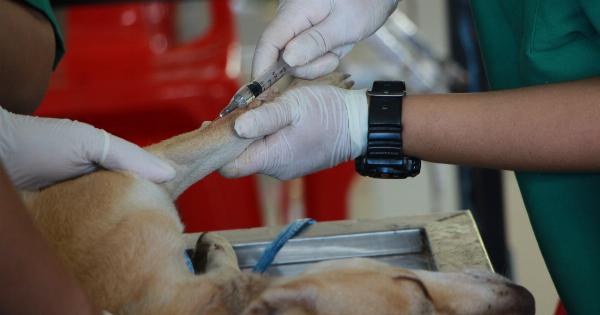It has become a common sight in cities around the world to see dog owners taking their furry friends for a ride on an electric scooter or bicycle. This trend has gained popularity due to the convenience it offers to both the dog and the owner.
However, many cities are starting to crack down on this practice, as it poses significant risks to public safety. In response, authorities have implemented strict regulations, including hefty fines for dog-riders who fail to comply.
1. The rise of dog-riding
The concept of dog-riding originated from the desire to provide an easy and efficient mode of transportation for both dogs and their owners. It allows dog owners to combine their daily exercise routine with the task of walking their pet.
The rise of electric scooters and bicycles made it even more convenient, as they require minimal effort from the owner while allowing the dog to get sufficient exercise.
2. The dangers of unleashed dogs
While the idea of dog-riding may seem harmless, it poses several risks to public safety. One of the major concerns is the issue of unleashed dogs.
With the freedom of riding on a scooter or bicycle, dogs are more prone to getting excited and potentially aggressive. An unleashed dog can pose a threat to pedestrians, cyclists, and even other dogs. This can lead to accidents and injuries, especially if the dog is of a larger breed.
3. The impact on public spaces
Another issue with dog-riding is the impact it has on public spaces. Parks and sidewalks are meant to be shared by everyone, and the presence of unleashed dogs on scooters or bicycles can disrupt this communal environment.
It can make other pedestrians and cyclists uncomfortable, and some may even choose to avoid these areas altogether. The excessive use of public spaces by dog-riders can also result in damage to property and landscaping.
4. Legal implications
In response to the growing concerns surrounding dog-riding, many cities have implemented regulations to address the issue.
These regulations vary from city to city but generally require dog-riders to keep their pets on a leash and abide by specific speed limits. Failure to comply with these regulations can result in hefty fines, with some cities imposing penalties as high as 300 euros.
5. Creating awareness
The regulations regarding dog-riding may seem strict, but they are essential for the safety and well-being of both dogs and the general public.
It is crucial for dog-riders to understand the potential dangers posed by unleashed dogs and the impact their actions have on public spaces. Creating awareness about these issues can help dog-riders make informed decisions and ensure that they are contributing positively to the community.
6. Alternatives to dog-riding
If dog-riding is not allowed or feasible in your city, there are several alternatives that can still provide dogs with the exercise they need.
Traditional walking or jogging with your dog is a great way to keep them active while ensuring their safety and the safety of others. Dog parks are also an excellent option, as they provide a designated space for off-leash play and exercise.
7. Training and socialization
To prevent accidents and incidents involving dogs, proper training and socialization are essential.
Before considering dog-riding or any activity that involves your dog being off-leash, ensure that they are well-trained and respond to your commands reliably. Socializing your dog with other animals and people from a young age can also help prevent aggressive behavior and ensure they can safely interact with others in public spaces.
8. Enforcing regulations
To effectively enforce the regulations surrounding dog-riding, cities must allocate resources towards enforcement and education.
This may include increased police presence in parks and public spaces, as well as awareness campaigns to inform dog-riders about the regulations and potential fines. By actively enforcing these regulations, cities can create a safer and more harmonious environment for everyone.
9. Benefits of responsible dog ownership
Responsible dog ownership goes beyond adhering to regulations and leash laws. It involves understanding your dog’s needs, providing proper training and socialization, and being considerate of others in public spaces.
Responsible dog owners can help foster a positive image of dog-riding and ensure that it remains a viable option for those who can safely and responsibly partake in it.
10. The future of dog-riding
The future of dog-riding will likely depend on the responsible actions of dog owners and the efficacy of regulations put in place by cities.
As awareness about the potential dangers and impact of dog-riding grows, it is expected that more cities will implement regulations or even prohibit the practice altogether. However, if dog-riders can demonstrate responsible behavior and adhere to regulations, there is a possibility that dog-riding can coexist harmoniously with other forms of transportation in the future.































